Abstract
Yanagawa, R. (National Institute of Animal Health, Kodaira, Tokyo, Japan), T. Hiramune, and J. Fujita. Effects of carbon dioxide on the colonial growth of pathogenic leptospirae. J. Bacteriol. 85:875–880. 1963.—The growth of colonies of pathogenic leptospirae was examined in air of various CO2 concentrations, ranging from air from which CO2 was absorbed to air with 20% CO2 added, and was compared with the growth of other microorganisms of the genera Mycoplasma, Brucella, Vibrio, Erysipelothrix, Staphylococcus, Micrococcus, Sarcina, Klebsiella, Salmonella, Escherichia, and Bacillus. The colonial growth of the 24 strains of pathogenic leptospirae examined was similar to that of other organisms in that the growth was negative in air from which naturally contained CO2 had been absorbed, the growth tended to be inhibited in 5 to 20% CO2 in proportion to the CO2 concentration, and good colonial growth of leptospirae was obtained in a relatively narrow range of CO2 concentration (from the normal amount in air to around 1%). The growth of some leptospirae was accelerated in 1% CO2, but not that of the strains of Leptospira icterohaemorrhagiae, which required a lower range of CO2, and of L. canicola. The CO2 requirement of pathogenic leptospirae was similar, to some extent, to that of Mycoplasma mycoides, but was not so high as that of Brucella abortus. Incorporation of C14O2 was demonstrated in leptospirae.
Full text
PDF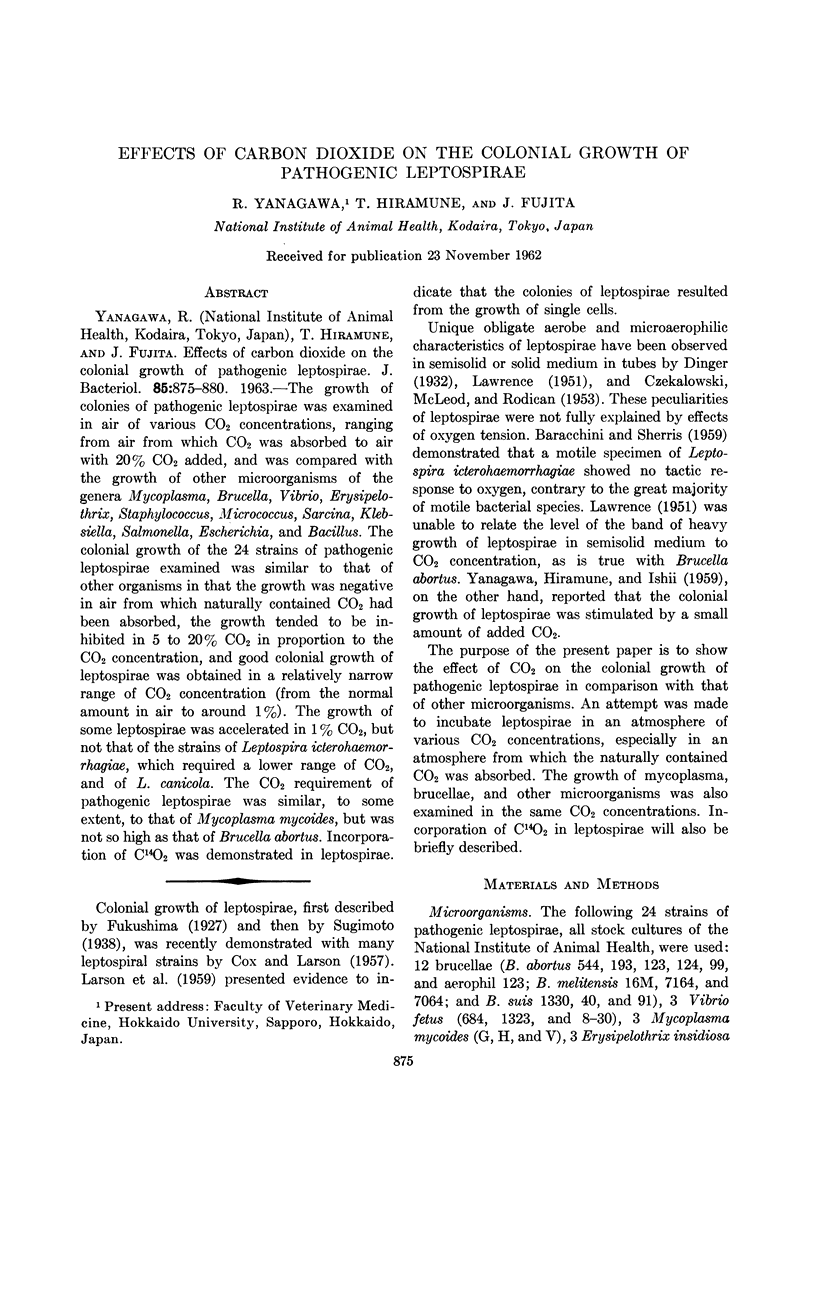
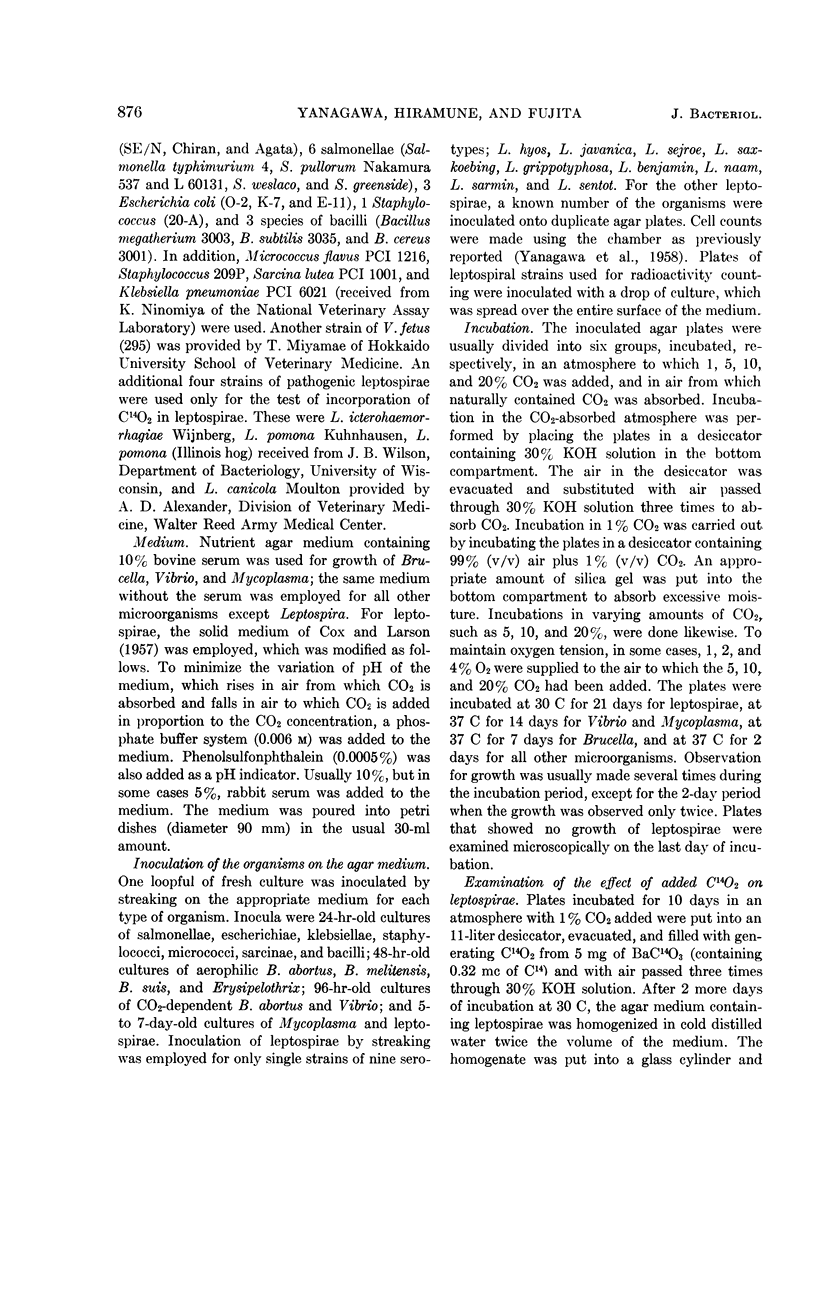
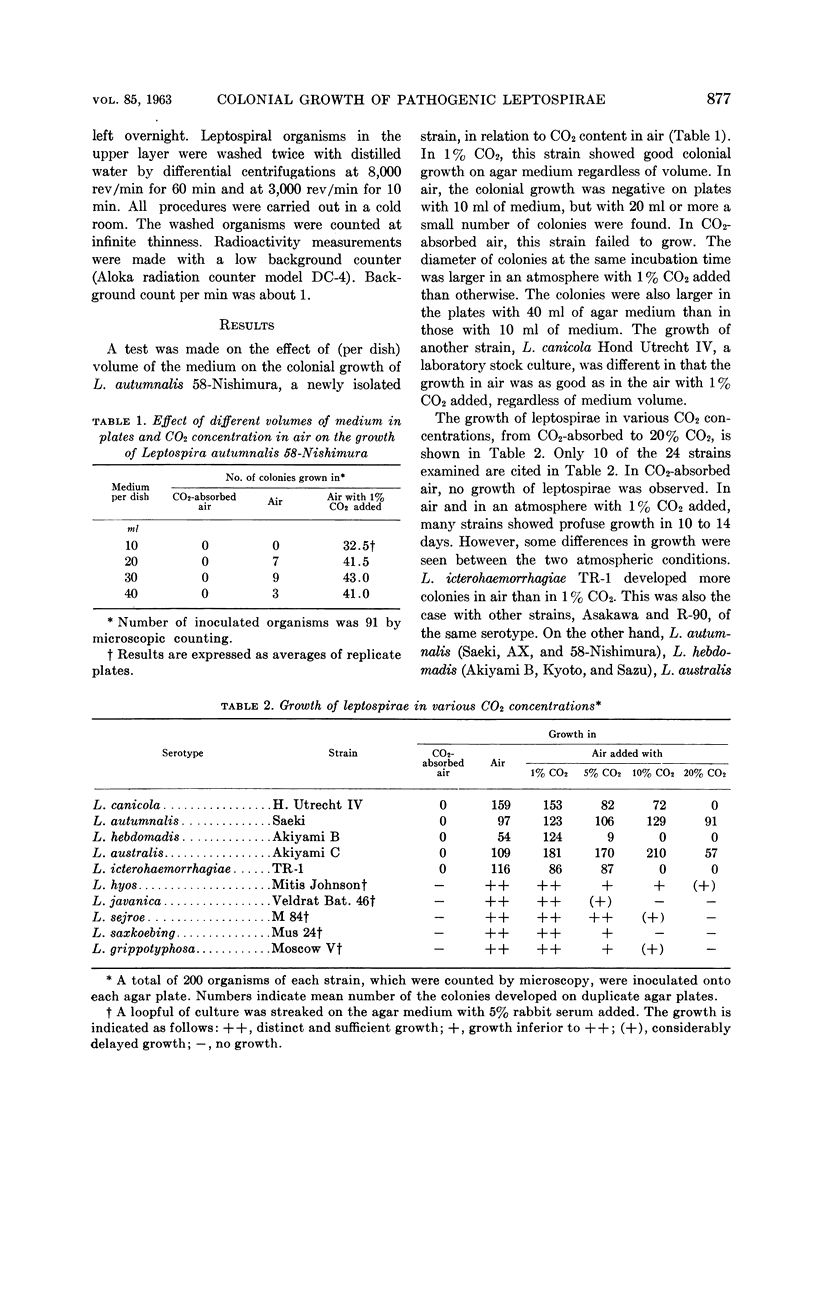
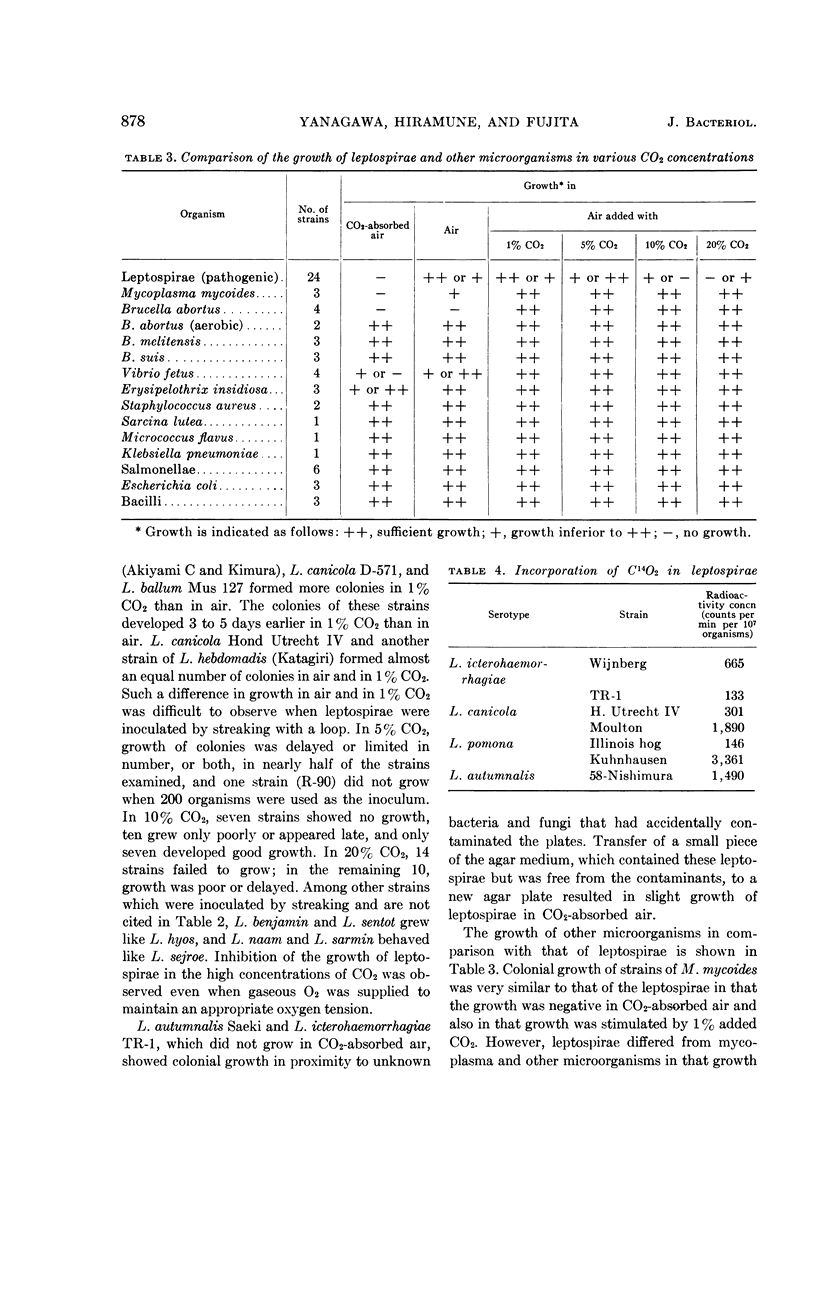
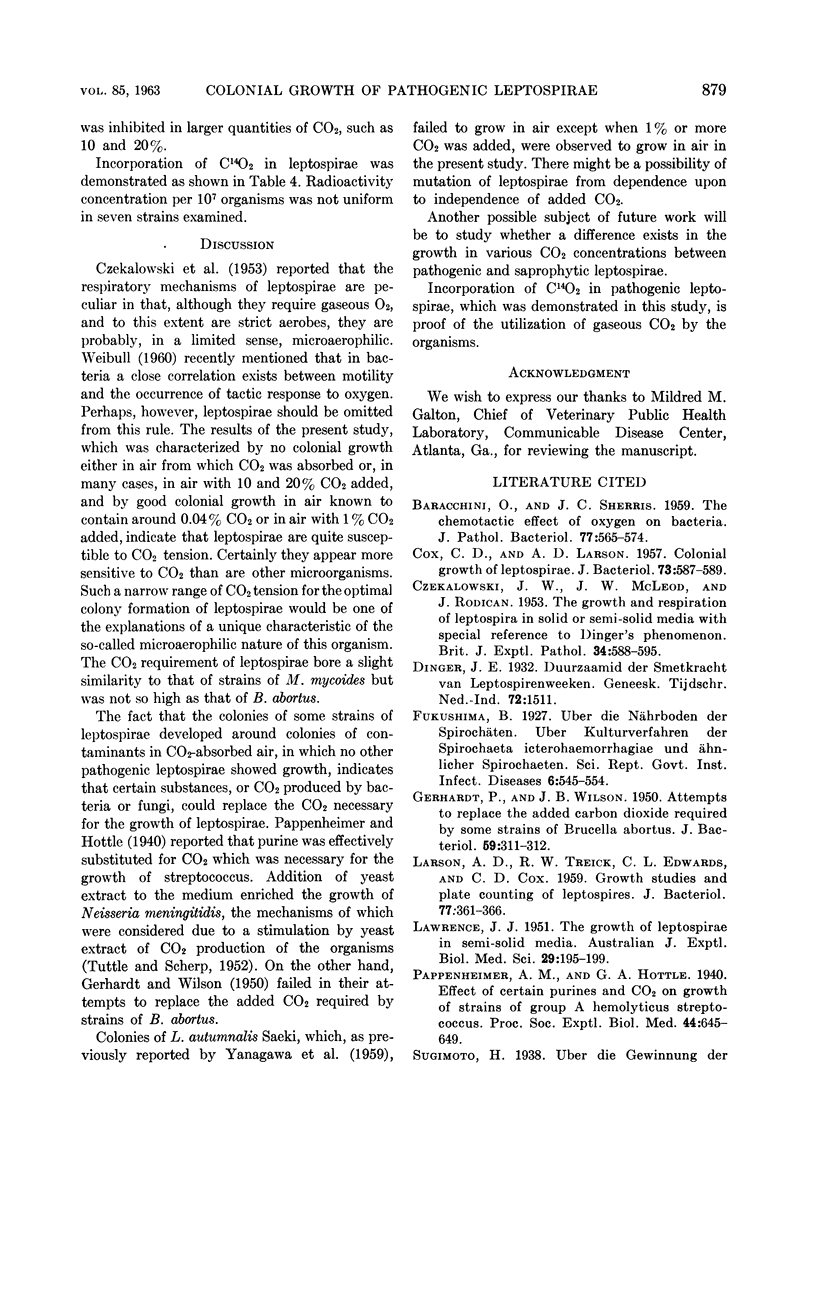
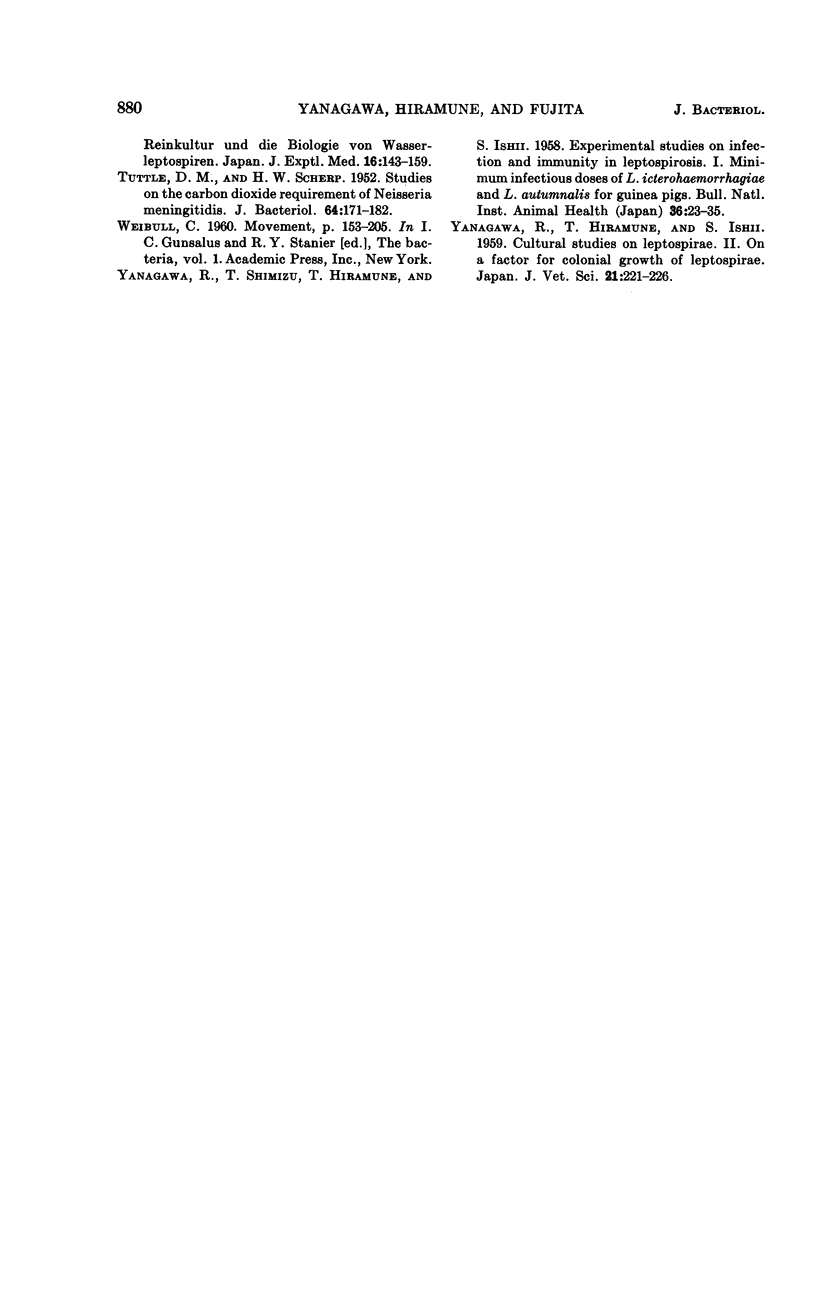
Selected References
These references are in PubMed. This may not be the complete list of references from this article.
- BARACCHINI O., SHERRIS J. C. The chemotactic effect of oxygen on bacteria. J Pathol Bacteriol. 1959 Apr;77(2):565–574. doi: 10.1002/path.1700770228. [DOI] [PubMed] [Google Scholar]
- COX C. D., LARSON A. D. Colonial growth of leptospirae. J Bacteriol. 1957 Apr;73(4):587–589. doi: 10.1128/jb.73.4.587-589.1957. [DOI] [PMC free article] [PubMed] [Google Scholar]
- CZEKALOWSKI J. W., McLEOD J. W., RODICAN J. The growth and respiration of Leptospira in solid or semi-solid media with special reference to Dinger's phenomenon. Br J Exp Pathol. 1953 Dec;34(6):588–595. [PMC free article] [PubMed] [Google Scholar]
- GERHARDT P., WILSON J. B. Attempts to replace the added carbon dioxide required by some strains of Brucella abortus. J Bacteriol. 1950 Feb;59(2):311–312. doi: 10.1128/jb.59.2.311-312.1950. [DOI] [PMC free article] [PubMed] [Google Scholar]
- LARSON A. D., TREICK R. W., EDWARDS C. L., COX C. D. Growth studies and plate counting of leptospires. J Bacteriol. 1959 Mar;77(3):361–366. doi: 10.1128/jb.77.3.361-366.1959. [DOI] [PMC free article] [PubMed] [Google Scholar]
- LAWRENCE J. J. The growth of Leptospirae in semi-solid media. Aust J Exp Biol Med Sci. 1951 May;29(3):195–199. doi: 10.1038/icb.1951.23. [DOI] [PubMed] [Google Scholar]
- TUTTLE D. M., SCHERP H. W. Studies on the carbon dioxide requirement of Neisseria meningitidis. J Bacteriol. 1952 Aug;64(2):171–182. doi: 10.1128/jb.64.2.171-182.1952. [DOI] [PMC free article] [PubMed] [Google Scholar]


